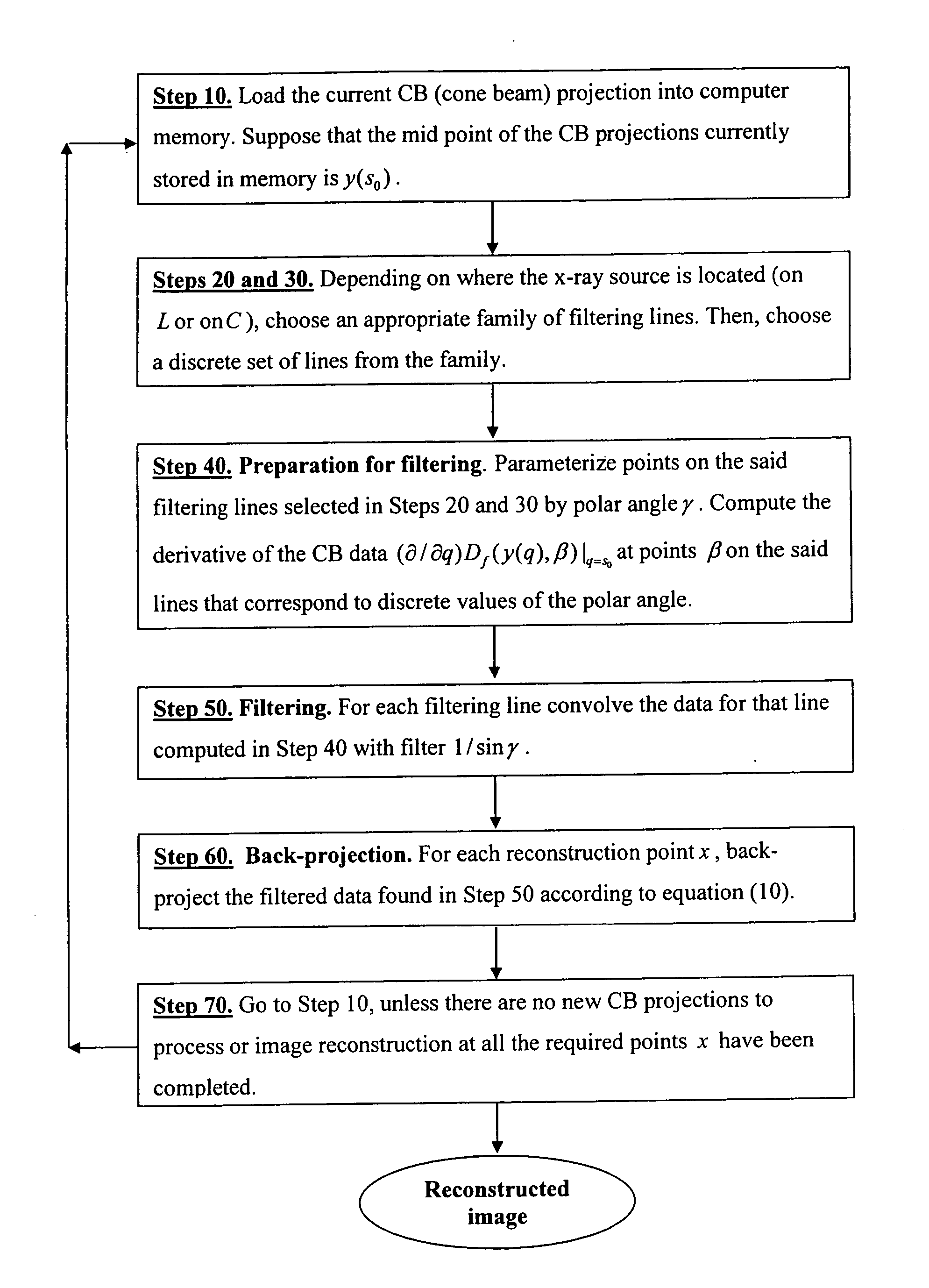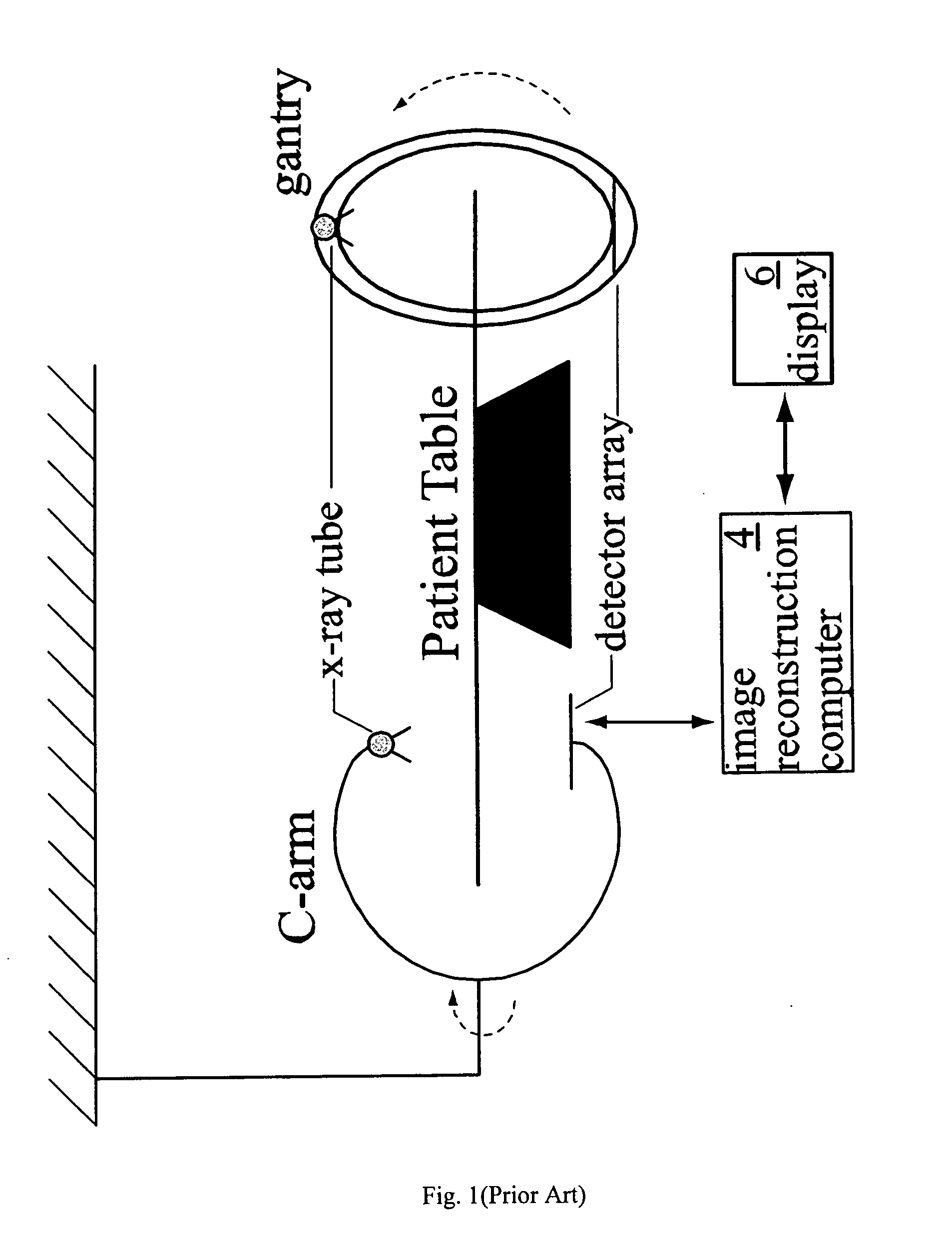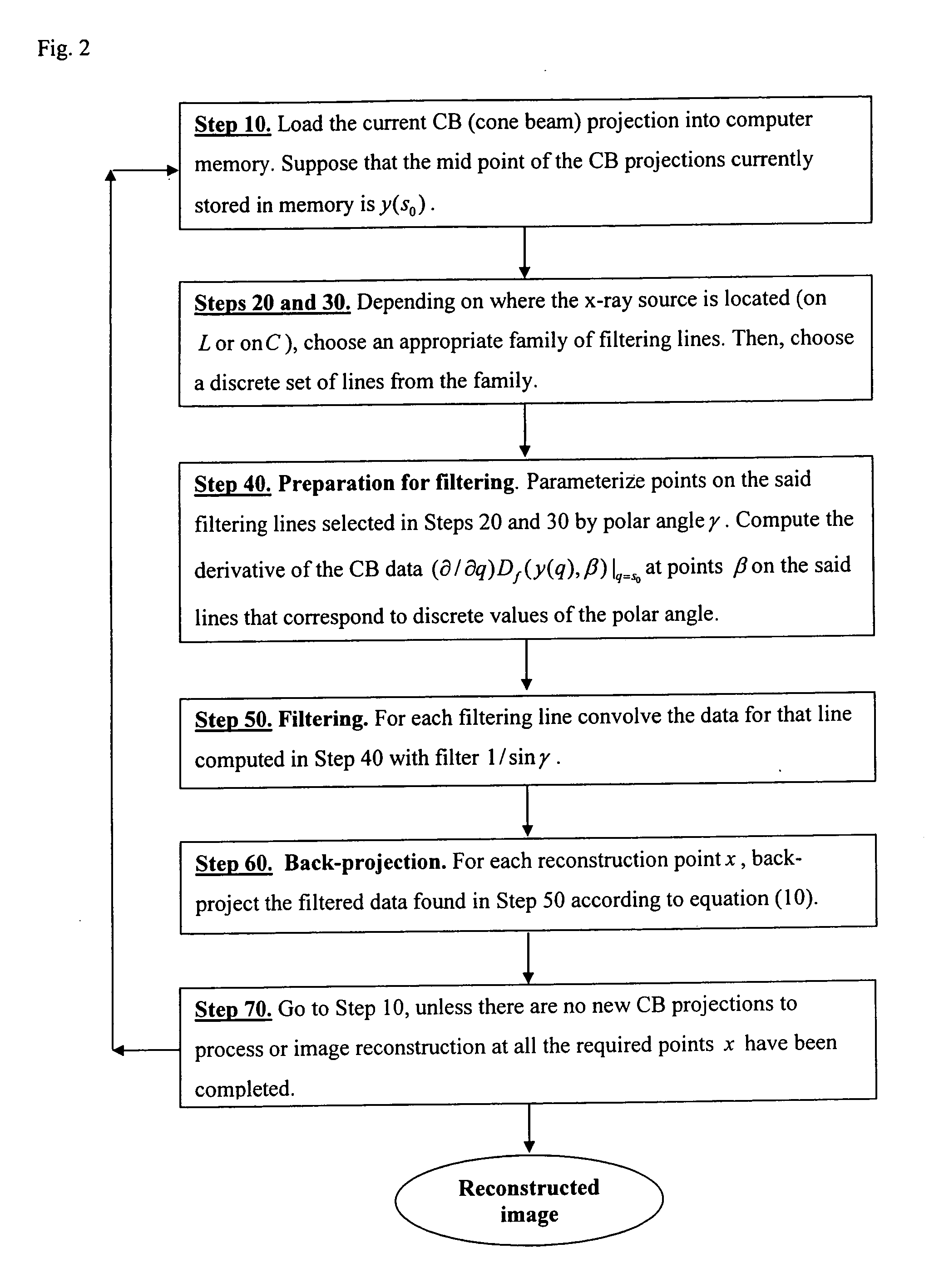Efficient image reconstruction algorithm for the circle and line cone beam computed tomography
an image reconstruction and computed tomography technology, applied in the field of computer tomography, can solve the problems of significant image reconstruction problems, all techniques and devices experiencing image reconstruction problems, and c-arm devices to reconstruct data,
- Summary
- Abstract
- Description
- Claims
- Application Information
AI Technical Summary
Benefits of technology
Problems solved by technology
Method used
Image
Examples
Embodiment Construction
[0040] Before explaining the disclosed embodiments of the present invention in detail it is to be understood that the invention is not limited in its application to the details of the particular arrangements shown since the invention is capable of other embodiments. Also, the terminology used herein is for the purpose of description and not of limitation.
[0041] This invention is a Continuation-In-Part of U.S. patent application Ser. No. 10 / 728, 136, filed Dec. 4, 2003 which claims the benefit of priority to U.S. Provisional Application Ser. No. 60 / 430,802 filed, Dec. 4, 2002, and is a Continuation-In-Part of U.S. patent application Ser. No. 10 / 389,534 filed Mar. 14, 2003 which is a Continuation-In-Part of Ser. No. 10 / 389,090 filed Mar. 14, 2003, which is a Continuation-In-Part of Ser. No. 10 / 143,160 filed May 10, 2002 now U.S. Pat. No. 6,574,299, which claims the benefit of priority to U.S. Provisional Application 60 / 312,827 filed Aug. 16, 2001, all of which are incorporated by ref...
PUM
 Login to View More
Login to View More Abstract
Description
Claims
Application Information
 Login to View More
Login to View More - R&D
- Intellectual Property
- Life Sciences
- Materials
- Tech Scout
- Unparalleled Data Quality
- Higher Quality Content
- 60% Fewer Hallucinations
Browse by: Latest US Patents, China's latest patents, Technical Efficacy Thesaurus, Application Domain, Technology Topic, Popular Technical Reports.
© 2025 PatSnap. All rights reserved.Legal|Privacy policy|Modern Slavery Act Transparency Statement|Sitemap|About US| Contact US: help@patsnap.com



